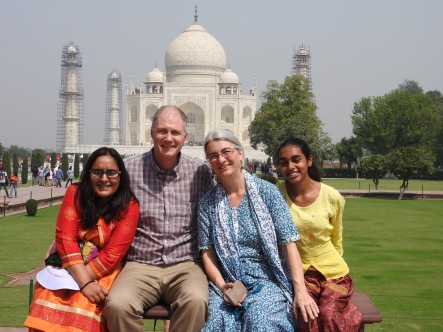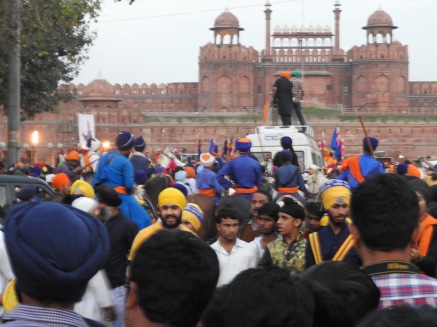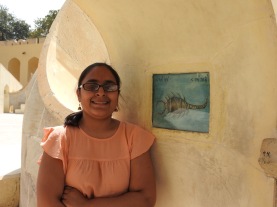From our previous post, you will see that the first “leg” of Adventures-with-Chris included Agra (Taj Mahal), Mathura, and Vrindavan. This post captures PART TWO OF ADVENTURES-WITH-CHRIS: Visits to the girls’ homelands.
Devki is from the western and somewhat remote town of Junegadh in the state of Gujarat. Malvika is from the more central and modernized town of Pune (also called Poona) in the state of Maharashtra. Both cities are wonderful, and provide quite a study of contrasts!
For the past week, our itinerary was: Delhi, Pune, Mumbai, Rajkot, Junagadh, Ahmedabad, back to Delhi. Three in-country flights, two days with hired drivers, 1 train ride. What a week it’s been!
We saw architectural marvels — including mosques, temples, mausoleums, fascinating 400-year-old step-wells, 2000-year-old Buddhist cave temples, and a fort built in 319 BC! We visited several museums, a famous bakery, vibrant street-markets, and more. We even attended a Good Friday church service with a re-enactment of the 12 Stations of the Cross.
The pictures, as usual, tell most of the story. I will not go into detail about the trips to the orphanages – those are the girls’ own private journeys — physically, spiritually, and emotionally. But I will say that there are still several people at the hotel in Ahmedabad who remember us from 16 years ago when Devki was first placed into our arms! We brought a picture of one of the chefs holding her as a baby, and he remembered her well.
I will also add that we were given the special opportunity to see the babies and young children at both orphanages, which was both sweet and painful. The orphanages are doing what they can to take good care of the children, but conditions are sparse and the children with special needs are unlikely to have a fulfilling future as they grow. At one orphanage, we saw an autistic boy of about 8 years confined to a small crib with no stimulation. Another charming boy, age 2, had crossed eyes and legs that bent around each other – both manageable conditions in a place with the right resources. We all said we would adopt any of these children in a heartbeat if we could. It was difficult to leave them, not knowing what their futures would bring.
The pictures also tell the story of contrasts between Pune – a “young” upbeat college town that reminded us of Boston – and Junagadh – remote and ancient. Interestingly, Mahatma Gandhi links both places together: He grew up in Gujarat and was later imprisoned in a “palace” in Pune. We have learned a great deal about Gandhi’s life and work.
In every single place we have been, the people have been extraordinarily kind and genuine. We have had people approach us to have their picture taken with us or to practice their English; we have had drivers, including rickshaw drivers, who went out of their way to be generous with their time; we have had moments of incredible beauty, peace, and connection. I can’t begin to capture the SPIRIT and GENTLE SOUL of India and its people – an awareness and compassion that permeates every place we have been.
Below are a handful of scenes from various spots. TRUST ME — I have pared and pared and pared down from hundreds of photos to try to keep these sets “short and sweet”! But you can’t imagine how difficult a task that is! I encourage you to take a look. If you simply can’t take another image of intricate carvings and other aspects of temples and mosques — very old, somewhat old, and new… at least check out the first set of “street scenes” to catch a glimpse of daily life being lived by everyday folks. 🙂
Set 1: Various street scenes from various places: (Note the photo of the cow-patties for sale. Also, in another photo, the man selling veggies is located in front of heaps of garbage where stray puppies scrounge for food.)
Set 2: Buddhist Cave, 8th Century, Pune:
Set 3: Aga Khan Palace where Gandhi was confined for 2 years, Pune:
Set 4: Dinkar Kelkar Museum, filled with eclectic objects (18th & 19th c.), Pune:
Set 5: Rajkot — temple, coconut milk on the street, Good Friday service:
Set 6: Tombs, Gates, Forts, Wells, Temples — Junagadh:
Set 7: Ahmedabad:
Set 8: Cama Hotel where we first met Devki as a 16-month-old baby! And where the Easter Bunny apparently found us, all the way around the world.
Set 9: Step well in Ahmedabad… And a last picture of a child in front of her home, sitting on a charpoy (which we see everywhere):


































































































































































































